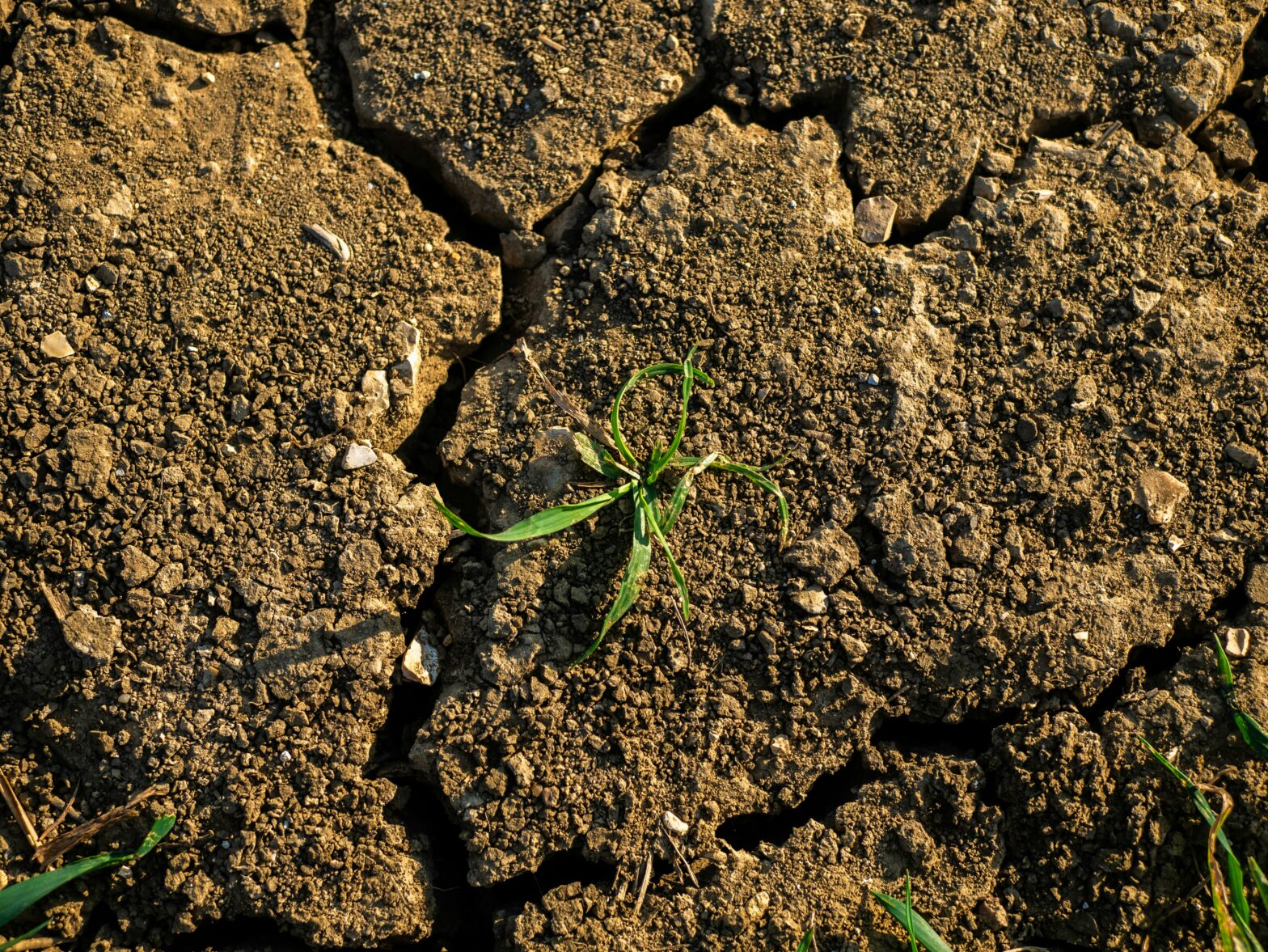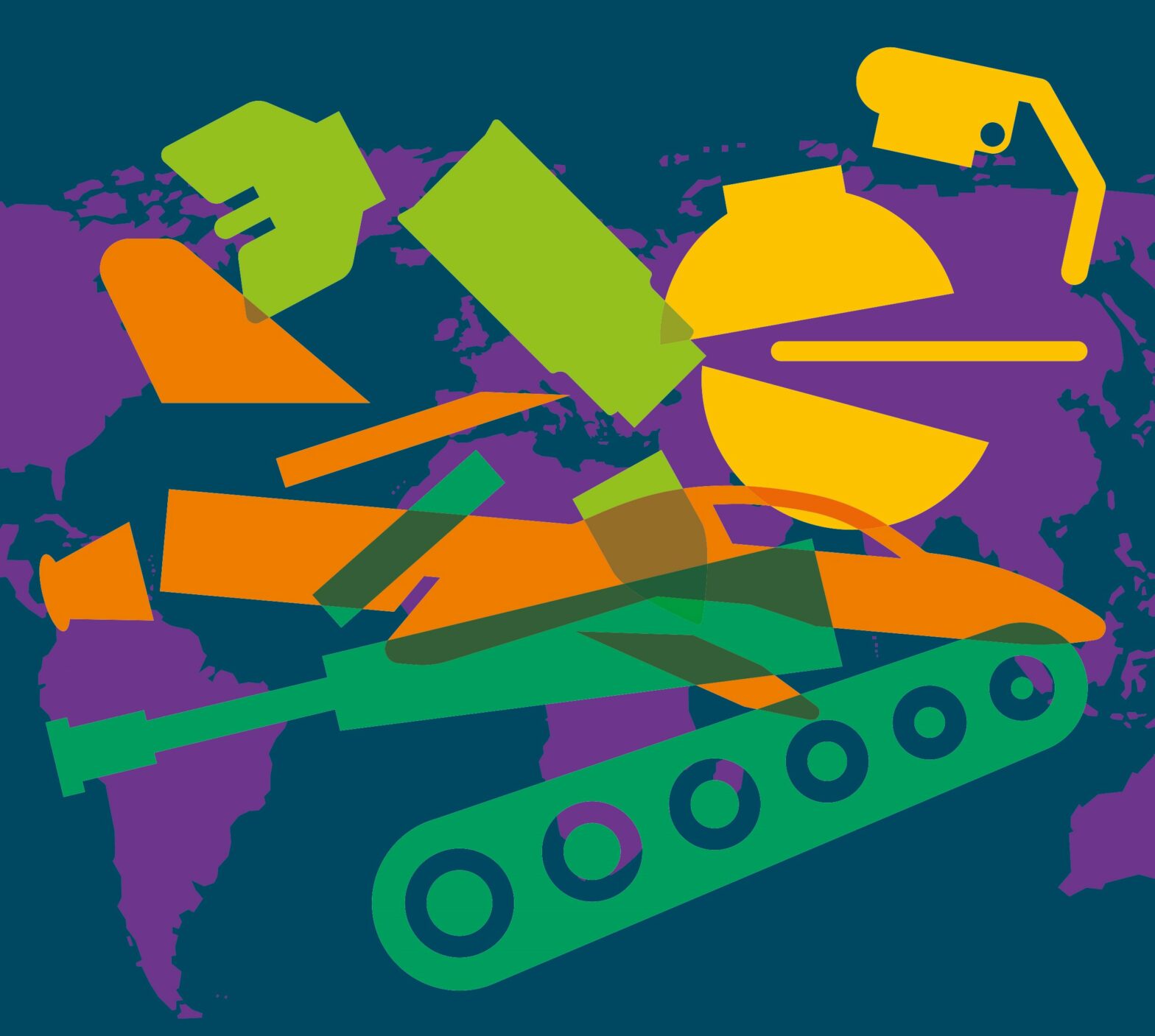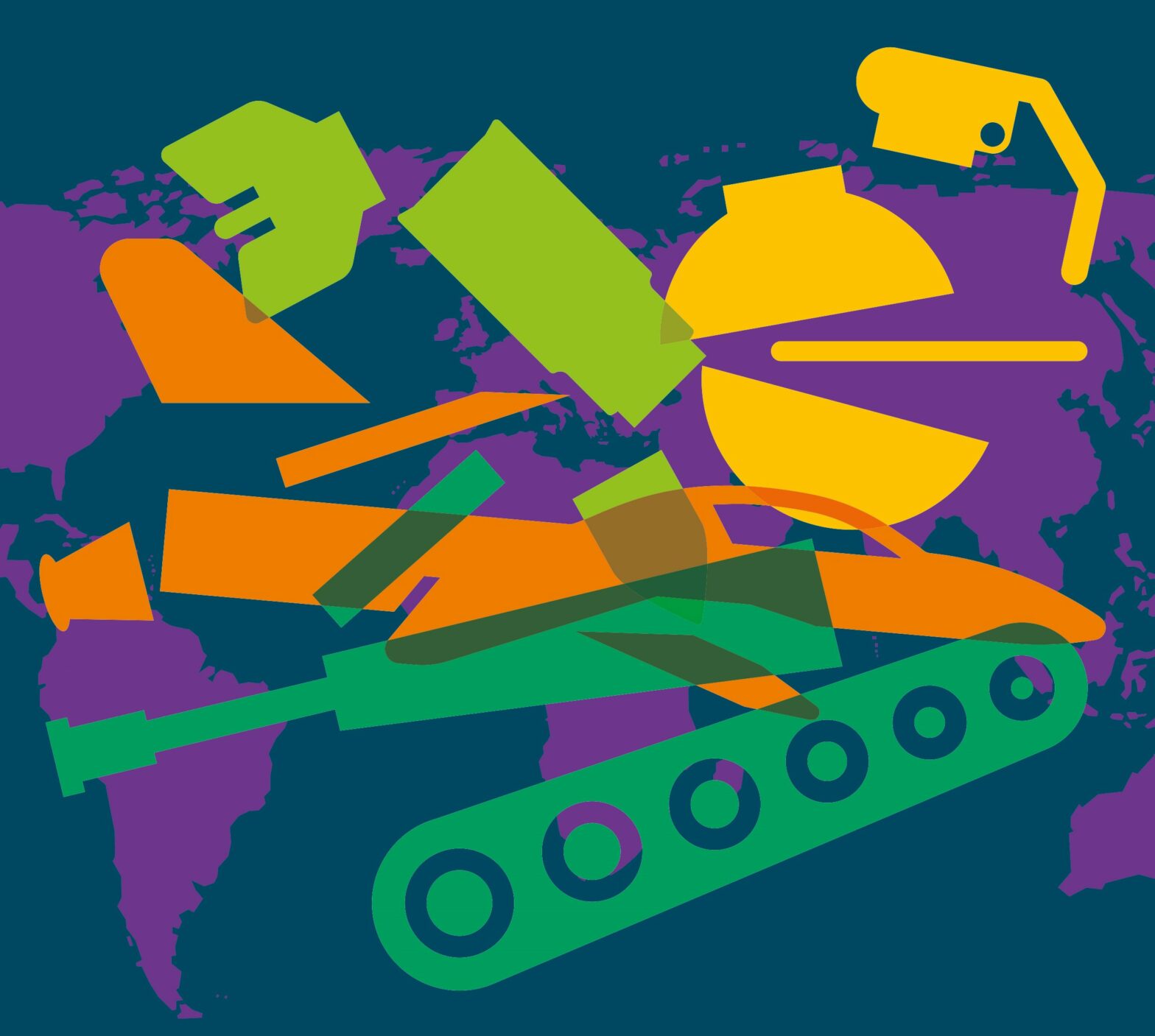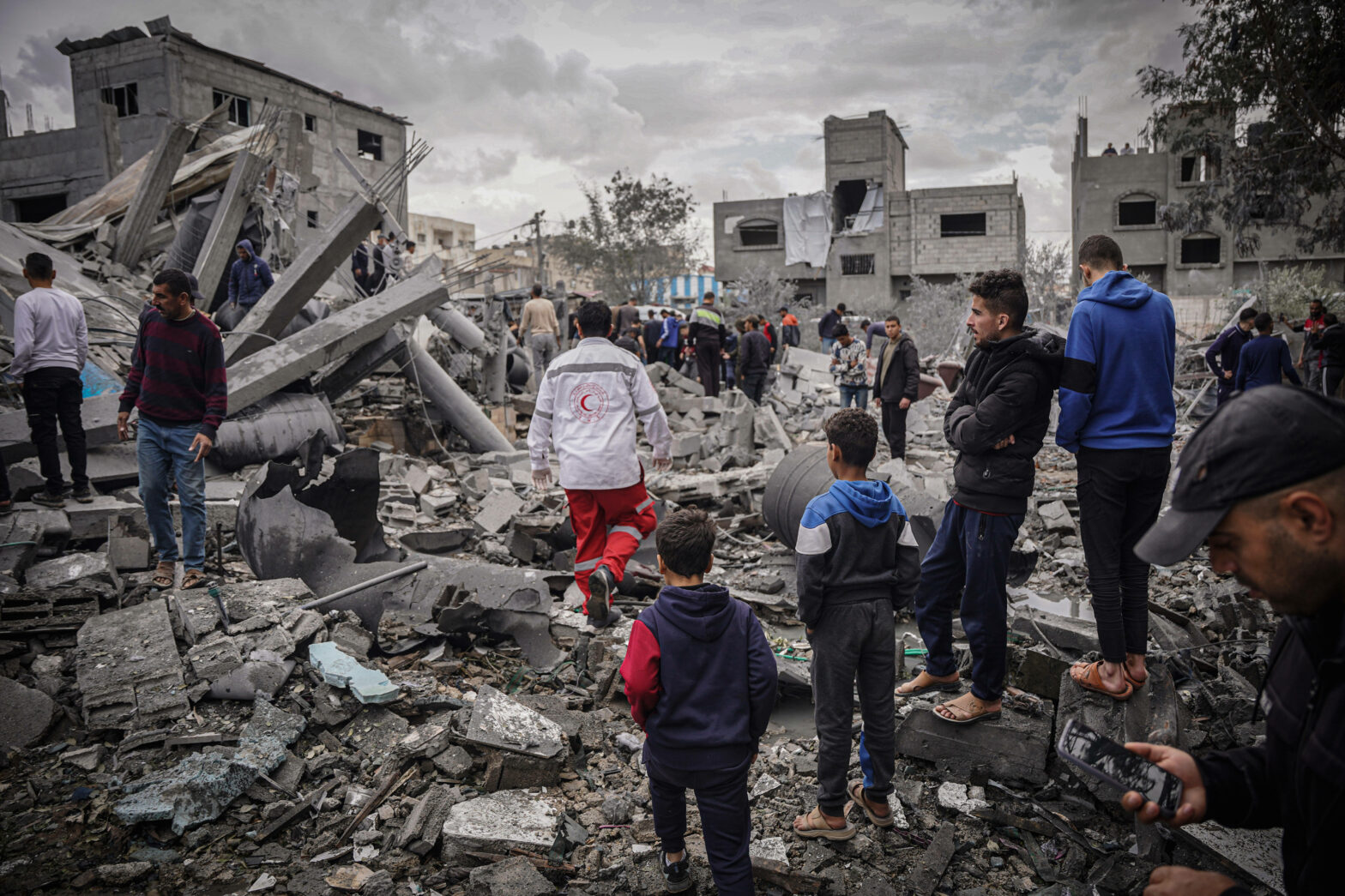Share Twitter Facebook Email Copy URL
As Israel’s war drags into its fourth month, neighbouring states are keen to avoid a wider conflict.
The war in Gaza has thrown the already volatile West Asia region into disarray.
Israel’s neighbours Egypt and Jordan fear the direct fallout of the conflict, while Lebanon runs a high risk of being drawn into the fighting. Saudi Arabia had to suspend its attempts to leverage a prospective “normalization” deal with Israel for further security guarantees from the US. The Iran-led so-called “Axis of Resistance” is piling more pressure on Israel and its US ally. Non-state actors within the axis have, to varying degrees, mounted attacks on Israeli or US assets and interests in the region to support their ally, Hamas.
While Iran, in many ways the key backer of Hamas and other anti-Israel groups, is trying to stay out of the line of fire, this high-stakes jostling could yet spiral out of control and spark a wider conflagration.
The Axis of Escalation
Just three days after the Hamas attack, US president Joe Biden had strong words for Israel’s other enemies: “Any country, any organization, anyone thinking of taking advantage of this situation, I have one word: Don’t. Don’t.” That stark warning was repeated during his visit to Israel a week later and backed up by the deployment of two aircraft carrier strike groups to the Eastern Mediterranean.
While Biden himself avoided singling out any particular enemy of Israel, US officials left no doubt that the parties they were seeking to deter were Iran and its allies. Also known as the Axis of Resistance, this loose alliance includes Iran and Syria, along with non-state actors like the Lebanese Hezbollah, an array of Iraqi groups known collectively as the “Islamic Resistance”, and the Ansar Allah group (better known as the Houthis) in Yemen.
While all these actors share hostility to the US and Israel as a basic tenet of their ideological outlook and enjoy Iranian financial, military and advisory support, the degree to which they look to the Iranian leadership differs.
Observers of Iran’s foreign policy concur that Tehran would rather preserve Hezbollah for future battles than sacrifice it on the altar of saving Hamas from the fallout of an operation over the timing of which it apparently wasn’t even consulted.
Hamas itself has benefitted greatly from Iranian support. Just like other Arab allies of Iran, Hamas acquired advanced military technology that Iran itself excels in developing and producing, in particular rockets and drones, and the capacity to operate them. Despite the near-total control that Israel and Egypt wield over official access points to Gaza, Hamas apparently still managed to smuggle equipment into the besieged enclave, while simultaneously acquiring know-how to produce some of these weapons domestically. Relations between Hamas and Iran soured when the former aligned itself with the Syrian uprising while the latter supported the Assad regime, but the partnership was fully restored by 2022, while training from Iran and Hezbollah improved Hamas’s operational capabilities.
Despite this relationship, Iran was apparently unaware of the scale and timing of the Hamas attack. Tehran clearly relished the massive blow that its archenemy suffered, but is not interested in being dragged into a war that may even lead to a direct confrontation with the United States. Keeping with the long-established Iranian strategy of deploying military pressure while working through partners that provide it with plausible deniability, Tehran’s non-state allies have instead initiated limited military action that has increased in scope and intensity over the course of the conflict.
The most formidable of these allies by a large margin is the Lebanese Hezbollah. Observers estimate the group at a strength of tens of thousands (the party itself claims 100,000) with a massive arsenal of missiles and drones that can reach all of Israel and would likely be able to overwhelm the country’s missile defence systems. Hezbollah only joined the Gaza conflict gradually, and for the first month, fighting remained confined to a narrow strip of territory some five kilometres deep along both sides of the border, from where civilians on the Lebanese side mostly fled and were evacuated on the Israeli side.
Hostilities paused during the temporary ceasefire in Gaza in late November, but resumed after that, with the territorial scope expanding and the intensity of the clashes increasing. Nevertheless, this still represents only a fraction of the destruction the parties could inflict upon one another in an all-out war. For the moment, both Israel and Hezbollah (as well its Iranian supporters) appear keen to prevent such an outcome.
Striking a Delicate Balance
For Hezbollah, the Gaza war presents a dilemma that closely resembles that of its state patron, Iran. Defending Palestine is a core element of their ideological narrative, and building a united regional front against Israel and the US is their long-term strategy. Both would seem to mandate all-out support for Hamas, but doing so could drag the group into an extremely destructive confrontation.
Observers of Iran’s foreign policy concur that Tehran would rather preserve Hezbollah for future battles than sacrifice it on the altar of saving Hamas from the fallout of an operation over the timing of which it apparently wasn’t even consulted. And while there is no shortage of passion for directly confronting the enemy within the broader Hezbollah constituency, voices can also be heard that express concern about the Shiite community in Lebanon’s capacity to bear massive displacement and destruction — of which they can expect to bear the brunt — four years into a debilitating economic crisis.
Hezbollah so far has managed these competing pressures by marketing its limited engagement as substantial support for Hamas’s war effort by tying down a significant part of the IDF on the northern border. That still implies the risk that miscalculation, such as a missile strike aimed at a military target that ends up killing a large number of civilians, may set off an uncontrollable spiral of escalation. All-out war between Hezbollah and Israel seems the most likely scenario to trigger a direct confrontation between their respective allies, Iran and the US, which could turn the Gaza war into a regional conflict.
Yet Hezbollah appears convinced that, precisely to avoid such a scenario, Washington will lean on Tel Aviv to restrict itself to a defence posture in the north. So far, this high-stakes gamble appears to be working.
While the Houthis are thought to be more independent from Iran than Hezbollah, they have displayed strong commitment to the Palestinian cause, and appear to be in close coordination with the rest of the Axis of Resistance in the current conflict.
Meanwhile, the Islamic Resistance in Iraq — mostly Shiite Islamist groups such as Kataib Hezbollah, Harakat Hezbollah al-Nujabaa, and Kataib Sayed al-Shuhada — have embarked on a campaign of attacks against US military bases in Iraq and Syria to punish Washington for its unwavering support for Israel. So far, the large majority of these attacks have been fended off without much damage, and the US has shown restraint in its response, retaliating four times (albeit with a number of casualties) for more than 100 attacks since 17 October in Iraq and Syria.
These attacks have the potential to affect the precarious stability that Iraq has achieved after years of upheaval. These groups suspended their partly violent campaign to force the departure of US combat troops from Iraq in November 2022 as part of a political deal that brought the current government to power. A new wave of violence now may well spell its downfall.
Since some of these groups command the loyalty of parts of the paramilitary Al-Hashd al-Shaabi (Popular Mobilization), this could also lead to a further rift in the Iraqi security sector. Any significant increase in casualties among US troops in north east Syria, on the other hand, may revive debates in the US Congress concerning the legitimacy and purpose of the troop deployment there, which is formally still based on the fight against ISIS.
Growing Tensions in the Gulf
Further south, the Houthis in Yemen have used long-range missiles to attack the southern Israeli port town of Eilat that so far have been intercepted by Saudi and Israeli, as well as US missile defence systems. The Houthis also hijacked a vehicle transportation ship partly owned by an Israeli businessman, and used drones and surface-to-sea missiles to attack Israel-linked ships in the Indian Ocean and on the busy shipping lane near the entrance to the Red Sea, where all vessels bound for the Suez Canal must pass, amounting to 10 percent of global trade.
On 9 December, the group announced that it would attack all ships going to Israel in both the Red Sea and the Arabian Sea, and on 12 December, a missile hit a Norwegian tanker which the owners said it was headed for Italy, while the Houthis claimed it was going to Israel.
A significant number of container ships have already been redirected away from the Red Sea, raising shipping costs worldwide. This prompted the US to announce an international maritime coalition by the name Operation Prosperity Guardian, yet responses from regional allies have been lacklustre, and whether this move can effectively ward off threats to the crucial shipping lanes around the Arabian Peninsula remains to be seen.
While the Houthis are thought to be more independent from Iran than Hezbollah, they have displayed strong commitment to the Palestinian cause, and appear to be in close coordination with the rest of the “Axis of Resistance” in the current conflict. At the same time, talks between the Houthis and Saudi Arabia to reach a peace deal that would end the long-standing war in Yemen continue. With de-facto ruler Mohamed Bin Salman prioritizing his agenda of a rapid social opening and economic diversification, Saudi Arabia appears concerned to contain any negative effects that the Gaza war may have on its current foreign policy approach, which is geared towards reducing frictions with its neighbours.
This new direction first became apparent with the Chinese-mediated rapprochement with Iran in March 2023. Saudi Arabia also gave Iranian President Ebrahim Raisi a platform to attack Israel for its war in Gaza during a joint meeting of the Organization for Islamic Cooperation and the Arab League in Riyadh on 11 November, marking the first visit of an Iranian president to Saudi Arabia in more than a decade.
Given strong domestic sentiment over Palestine among the Saudi population, normalization with Israel, which Bin Salman was hoping to leverage for a strategic partnership with the US, seems to be off the agenda for now. Saudi Arabia and countries that have already signed normalization accords with Tel Aviv, like the UAE and Bahrain, appear unlikely to go beyond rhetorical condemnation of Israel. That said, their geographic proximity to Iran also implies that they would be severely affected should the Gaza war spiral into a direct confrontation that pits Israel and the US against the Axis of Resistance.
Tension along Israel’s Borders
For Jordan and Egypt, the Gaza war poses an additional threat. At least half of Jordan’s population are of Palestinian origin, and the kingdom has seen an unprecedented outpouring of support for Hamas. The Jordanian leadership also fears that violence in the West Bank, which has been on the rise since Israel’s current right-wing government took power, will spin out of control and cause a massive expulsion of Palestinians into Jordan. Such a scenario is liable to lead to public unrest that could destabilize the rule of pro-Western King Abdallah II.
Egypt has even more reason to fear a mass influx of Palestinian refugees, as Israel pushes the Gazan population ever closer to the Egyptian border and Israeli politicians speculate publicly about the option to “resettle” a significant part of Gaza’s population to third countries. Egyptian officials have firmly rejected the idea to take in a significant number of refugees from Gaza in exchange for the write-off of some of Egypt’s massive foreign debt. Cairo refuses to have the political cost for Israel’s war thrown into its lap, and does not want to be seen as cooperating in yet another displacement of Palestinians, which would trigger a strong reaction among the Egyptian population that harbours solid support for the Palestinian cause.
Regardless of its outcome, the Gaza war will leave the region even more volatile and prone to conflict than before.
Officials also fear that a big population of embittered refugees will become fertile ground for Hamas to reconstitute itself on Egyptian soil, and become a security problem for Egypt as well. The origins of Hamas in the Muslim Brotherhood, which the Egyptian leadership considers its most serious domestic enemy, doesn’t help. While Egypt has fortified its border with Gaza over the years, the scenario of tens of thousands of desperate civilians trying to break through to escape Israeli bombardments remains a nightmarish scenario for Cairo that can’t be ruled out.
For these reasons, and because it provides the only access to the embattled strip, Egypt played a key role in the mediation efforts led by Qatar. Over the past years, the Gulf sheikhdom has acquired a track record of hosting or facilitating talks and sometimes deals between parties that otherwise won’t interact with one another. They have also hosted the political leadership of Hamas and funded Hamas’s government in Gaza since 2012 — the former (according to Doha) with explicit approval of the US, which preferred to keep access to the group rather than seeing it relocate to Iran, and the latter with the active cooperation of the Israeli leadership, which sought to contain Hamas and pacify Gaza this way.
Doha has therefore become the default mediator for the current conflict. It engineered the one-week ceasefire and hostage exchange between Israel and Hamas at the end of November.
It has received praise but also a great deal of criticism for that role, particularly from right-wing US politicians and others who called Qatar out for its alleged support of terrorism. Yet most of these voices are also known proponents of a hard line against Iran, and appear to be motivated at least in part by fierce opposition to the role that Qatar played as a go-between for Tehran and Washington, facilitating the prisoner exchange deal between Washington and Tehran in September.
Navigating the Crisis
Regardless of its outcome, the Gaza war will leave the region even more volatile and prone to conflict than before. It is unclear whether any amount of retribution, surveillance, and security zones will restore Israel’s sense of security that was shattered on 7 October. The Jewish state seems determined to double down on the notion that only military might— not only the display thereof, but the actual use of it against restive populations inside and beyond its borders — can provide security.
Israel’s enemies who cooperate in the Axis of Resistance can be counted on to exploit this dynamic for their attempts to slow down or even derail attempts at regional economic and security integration and cooperation, which they see as directed against them. Regional partners of Israel and the US struggle to navigate the crisis without being dragged into the conflict itself, or into a regional confrontation with the Axis of Resistance. Maintaining that balance is likely to become more difficult as the fighting drags on or spreads, with a conflict between Israel and Hezbollah as the most likely trigger for a regional conflagration.
Heiko Wimmen is the Project Director for Iraq, Syria, and Lebanon at the International Crisis Group. This article was first published on rosalux.de



